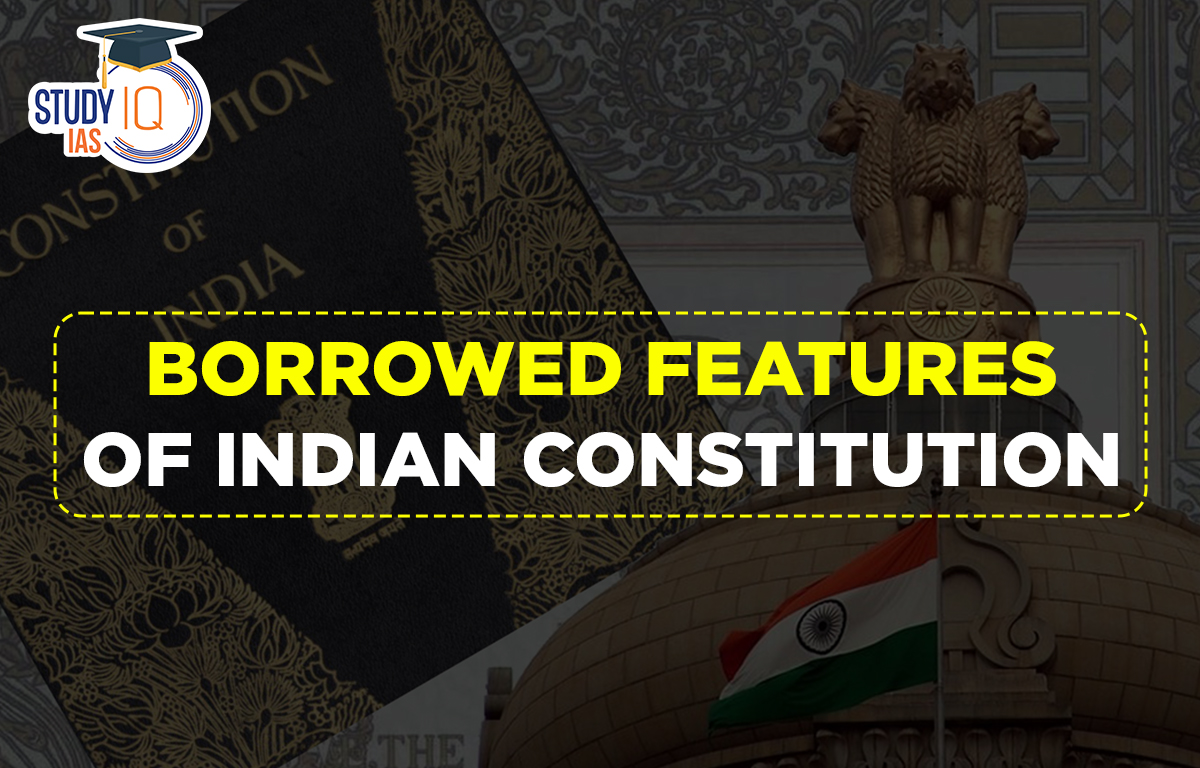
The Indian Constitution has been drawn from different Sources. Check complete List of Borrowed Features of the Indian Constitution from Other Countries.
Last updated on May 26th, 2024 03:50 pm

Table of Contents
The Indian Constitution is a living document and an instrument which makes the government system work. A large number of provisions in the Indian constitution are inspired by other Constitutions of the world. However, our Constitution has a few distinctive features that set it apart from other constitutions.
With more than 6,000 pages of text, the Indian Constitution is among the most comprehensive constitutions globally. Our Constitution includes 12 schedules and 470 articles, which makes it the lengthiest written constitution in the world.
There are various factors which have contributed to the vast size of the Indian Constitution. These include; the first h istorical factors as 70% (approx.) portion of our constitution has the influence of the Government of India Act, 1935 which was bulky in itself. Second, g eographical factors as India is a vast and diverse country and Single Constitution for both Centre and States.
The Indian Constitution has borrowed most of its provisions from varied sources. Dr BR Ambedkar rightly said that the Indian constitution has been framed after ransacking all the known Constitutions of the world. Despite the borrowed features in the Indian Constitution, it is a unique set of laws which explains the structure and workings of the Government of India.
The Government of India Act 1935 is the primary reference for the Constitution as the structure and framework of the Indian constitution are largely derived from it. The philosophical part of the Constitution is largely borrowed from the American and Irish constitutions. The political part of the constitution has been drawn from the British constitution. It includes the principle of Cabinet Government and the relations between the Executive and the legislature.
Here is a List of Borrowed Features of Indian Constitution and their respective source country is given below:
| Sources | Features Borrowed |
| Government of India Act of 1935 | Federal Scheme |
Office of the governor
Public Service Commissions
Impeachment of the President
Functions of the President and Vice-president
Removal of Supreme Court and High Court judges
Judicial review & Independence of Judiciary
Independence of Judiciary
More powerful Lower House
Council of Ministers responsible for Lower House
Speaker in Lok Sabha
Cabinet System of Ministers
Post of Prime Minister
Parliamentary Type of Government
Language of the preamble
Article 108 i.e. Joint sitting of the two houses
Distribution of powers between the centre govt. and the state govt.
Residuary powers vest with the centre.
Centre appoints the Governors at the states.
Method of election of President
In response to this critique, Dr. B.R. Ambedkar (chairman of the Drafting Committee) during his speech at the Constituent Assembly stated that “One can wonder whether there can be anything new or unique thing in the Indian Constitution. “But in the true sense, the makers of the Indian constitution did not precisely imitate the features or aspects of other countries constitutions.
Instead, the makers made the necessary and possible adjustments to the borrowed features from the other constitutions in order to adapt them to the Indian conditions while at the same time putting aside their shortcomings.